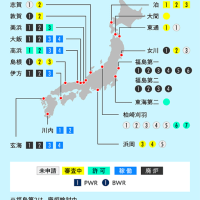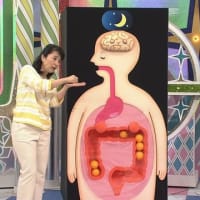05/24:3014 WIRED NEWS (US)
Psychologists Give People Control of Their Dreams Using Brain Stimulation. Really?
BY CHRISTIAN JARRETT 05.12.14 | 8:15 AM | PERMALINK
Share on Facebook208
inShare
11 5

Image: Old Visuals Everett Collection/Getty
My dreams are often like a bad TV night – full of repeats that I’ve slept through many times before. Other people are luckier. Their dreams are more like a movie experience, but one where they not only get to choose the film, they can also take directorial control and influence the course of events. This is known as “lucid dreaming” and considered a half-way house between sleep and wakefulness.
In a study out this week, a team of psychologists led by Ursula Voss at the J.W. Goethe University in Frankfurt, claim to have given non lucid-dreamers the power of lucid dreaming by applying weak electrical current to the surface of their scalps and into their brains.
The rationale behind the study is simple. Past research has associated lucid dreaming with electrical brain activity in the low gamma range – around 40Hz. Voss and colleagues therefore used transcranial alternating current stimulation (tACS) to promote gamma activity in frontal and temporal regions of their participants’ brains, in the hope that this would provoke lucid dreaming (tACS is similar tDCS, which I’ve written about on this blog before).
I have to admit this reasoning tickled my BS-detector a little. Neurobunk research conducted in the 1960s made the mistake of assuming that because experienced meditators exhibit brain activity in the alpha range (around 10Hz), then teaching people to express alpha brainwaves would give them a shortcut to the peace and enlightenment associated with years of meditative practice. It was an elementary case of confusing correlation for causality and results were disappointing.
Despite my initial skepticism, it turns out that, aside from a small sample, this new dream research is well conducted. Voss and her team tested 27 healthy volunteers (15 women, 12 men, none of whom usually have lucid dreams) on four successive nights. Each night, the participants were zapped with electricity in a different frequency range or – and it’s important they included this condition – with no electricity at all (known as a “sham” treatment). The stimulation was delivered after between two and three minutes of uninterrupted REM sleep. Shortly afterwards the participants were woken and they answered questions about the dream they’d just had.
The main result is that stimulation specifically delivered in the low gamma range, at 40Hz, and to a lesser extent at 25Hz, was associated with a greater experience of lucid dreaming, as compared to stimulation at other higher and lower frequencies or to sham treatment. “Our experiment is, to the best of our knowledge, the first to demonstrate altered conscious awareness as a direct consequence of induced gamma-band oscillations during sleep,” the researchers concluded. Excitable headlines have followed, such as “Brain Zap Could Help You Control Your Dreams” and “Having Nightmares? Control Your Dreams With Electric Currents“.
Despite the robust methodology, I think these headlines are getting carried away. Here’s why. Lucid dreaming was defined by higher scores in participants’ feelings of insight (knowing that they were dreaming); dissociation (taking a third person perspective); and control (being able to shape events). I looked up the paper where the researchers first described their scale for measuring these factors. If I understand correctly, the participants rated their experience of these three factors on a scale of 0 (strongly disagree that I had such an experience) to 5 (strongly agree). Now if we look to see the scores they gave for how much dream insight, dissociation and control they had, we find that the averages for the gamma stimulation condition are around 0.6, 1.3, and 0.5 respectively.
Yes, these scores are significantly higher compared with stimulation at other frequencies and with sham treatment, but they are nonetheless incredibly low. A real life creation of the dream control depicted in the movie Inception, this is not! I suppose this study is a proof of principle, so let’s wait and see what comes from future research.
But actually one more thing – these kind of studies that examine the impact of brain stimulation seem so crude. Do the researchers really know what neural effect the stimulation is having and why? I don’t think they do – the explanation in this paper is typically sketchy. “We assume that lower gamma activity is mediated by activation of fast-spiking interneurons that are known to generate gamma oscillations in cortical networks … These networks have been proposed to gate sensory processing, which might also enable lucid dreaming in a temporarily specific manner.” Got that? No, me neither.
Share on Facebook208
inShare
11 Reddit Digg Stumble Upon Email
Tags: brain stimulation, dreaming, Sleep
11 Comments | Permalink
WE RECOMMEND
RECOMMENDED BY
Ghostly Plane Wrecks Found in Remote, Exotic Locations
New Quantum Theory Could Explain the Flow of Time
Human Design Imperfections
- LEARNIST
05/24:3014 WIRED NEWS (US)
2014.5.15 THU
「思い通りになる夢」を思い通りに見る方法: 科学者たちの試み
自分が夢を見ていることを認識し、その内容をコントロールできる「明晰夢」。最新研究によると、脳に弱い電流を送ることで、この夢を誘発できるかもしれないという。
TEXT BY CHRISTIAN JARRETT
IMAGE BY WIKIMEDIA COMMONS
TRANSLATION BY TOMOKO TAKAHASHI, HIROKO GOHARA/GALILEO
WIRED NEWS (US)
筆者の見る夢は非常に退屈だが、世の中には、明晰夢(めいせきむ)という奇妙な夢を見ることが出来る人たちがいる。自分で夢であると自覚しながら見る夢であり、夢の状況を自分の思い通りに変化させることができる場合もあるというものだ。これは、脳が覚醒状態と睡眠状態の中間にあるときに見る夢だと考えられている。
そしてこのほど、頭蓋表面から脳内に弱い電流を流すことで、普段は明晰夢を見ない人にも、明晰夢を見させることに成功したという研究が発表された。
この研究は、5月11日付けで『Nature Neuroscience』誌に発表されたもので、フランクフルトにあるゲーテ大学(フランクフルト大学)で心理学を研究するウルズラ・フォス率いるチームが手がけたものだ。
フォス氏らは2009年の研究において、明晰夢を見る訓練を受けた6名を調べ、明晰夢が起きている間、前頭野から30~40Hzの脳波が発生していることを明らかにしていた(ガンマ波とされる脳波の帯域だ)。同氏らは今回、明晰夢を誘発するため、経頭蓋交流電気刺激法(tACS:Transcranial Alternating Current Stimulation)を用いて、被験者の脳の前頭野と側頭野におけるガンマ波活動を促進した。
フォス氏のチームは、普段は明晰夢を見ない、健康な被験者27名(女性15名、男性12名)に対して4日連続で実験を行った。被験者に毎晩、さまざまな周波数帯域の電流を流し、また一部の被験者にはまったく電流を流さなかった(この条件を含めることは重要であり、これを偽処置という)。
電気刺激は、レム睡眠が2~3分間とぎれずに続いた後に30秒間施し、それから被験者を起こして、直前まで見ていた夢について質問を行った。
映画『インセプション』のような結果に…?
実験の結果、ガンマ波帯域とされる40Hz、またそれに次いで25Hzでの電気刺激が、明晰夢を誘発する効果を示した(40Hzの刺激が与えられた被験者は、77%の確率で明晰夢を見たと報告した。25Hzで刺激された場合は58%の確率だった。ただし、「夢の筋書きをコントロールする」ポイントは高くなった)。他の周波数での刺激や偽処置では、効果は認められなかった。
ただ、効果があったとはいっても、映画『インセプション』に描かれたような、鮮やかな夢のコントロールが可能になったわけではない。
この研究において、明晰夢を見たかどうかは、被験者が感じた「認識」(自分が夢を見ているとわかっていること)、「解離」(第三者の視点で見ていること)、および「制御」(夢の内容をコントロールできること)のスコアの高さによって評価された。
筆者は、フォス氏らがこれら要素の評価尺度について記述した既存研究を調べてみた。筆者の理解が正しければ、被験者はこれら3つの要素を、0~5段階のスケール(0=そのような要素を経験したとはまったく思わない、5=非常にそう思う)で評価したようだ。その上で、被験者が自身の夢の認識、解離、制御を評価したスコアを見てみると、ガンマ波刺激を受けた条件下での平均スコアは、それぞれ約0.6、1.3、0.5だった。
他の周波数や偽処置に比べると、これらのスコアは有意に高い。しかし、スコアそのものとしては非常に低い数値だ。
今回の研究はひとまず原理を実証したものと考え、今後の研究に期待することにしよう。




















※コメント投稿者のブログIDはブログ作成者のみに通知されます